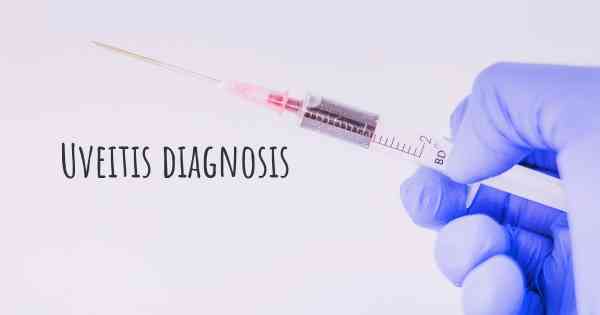How is Uveitis diagnosed?
See how Uveitis is diagnosed. Which specialists are essential to meet, what tests are needed and other useful information for the diagnosis of Uveitis

How is Uveitis Diagnosed?
Uveitis is a condition characterized by inflammation of the uvea, which is the middle layer of the eye. It can affect any part of the uvea, including the iris, ciliary body, and choroid. Uveitis can be caused by various factors such as infections, autoimmune disorders, trauma, or underlying systemic diseases.
Diagnosing uveitis requires a comprehensive evaluation by an ophthalmologist or an eye specialist. The diagnostic process involves a combination of medical history review, physical examination, and specialized tests to determine the presence and severity of uveitis.
Medical History Review
The first step in diagnosing uveitis is a thorough review of the patient's medical history. The ophthalmologist will ask questions about the patient's symptoms, including the duration, progression, and any associated pain or visual disturbances. They will also inquire about any previous eye conditions, surgeries, or systemic diseases that may be relevant to the uveitis diagnosis.
Physical Examination
During the physical examination, the ophthalmologist will carefully examine the patient's eyes using various instruments. They will assess the visual acuity, measure intraocular pressure, and evaluate the external structures of the eye. The ophthalmologist will also perform a slit-lamp examination, which allows them to visualize the anterior segment of the eye, including the cornea, iris, and lens.
One of the key signs of uveitis is the presence of cells and flare in the anterior chamber of the eye. Cells are white blood cells that can be seen floating in the clear fluid of the anterior chamber, while flare refers to the presence of protein and other inflammatory substances that cause the fluid to appear hazy.
Specialized Tests
In addition to the physical examination, several specialized tests may be performed to aid in the diagnosis of uveitis:
- Visual Field Testing: This test assesses the patient's peripheral vision and can help detect any visual field defects caused by uveitis.
- Fluorescein Angiography: This imaging test involves injecting a fluorescent dye into the patient's bloodstream and taking photographs of the retina. It helps identify any abnormalities in the blood vessels of the retina, which can be indicative of uveitis.
- Optical Coherence Tomography (OCT): This non-invasive imaging test provides detailed cross-sectional images of the retina, allowing the ophthalmologist to assess the thickness and integrity of retinal layers. It can help detect any swelling or fluid accumulation in the retina, which may occur in uveitis.
- Ultrasound: In some cases, ultrasound imaging may be used to visualize the posterior segment of the eye, especially when the view is obstructed by severe inflammation or cataracts.
- Laboratory Tests: Blood tests may be ordered to check for specific antibodies or markers of inflammation that can help identify the underlying cause of uveitis. These tests may include complete blood count (CBC), erythrocyte sedimentation rate (ESR), C-reactive protein (CRP), and tests for infectious agents such as syphilis or tuberculosis.
Collaboration with Other Specialists
Since uveitis can be associated with systemic diseases, the ophthalmologist may collaborate with other medical specialists, such as rheumatologists or infectious disease specialists, to further investigate the underlying cause of uveitis. This multidisciplinary approach ensures a comprehensive evaluation and appropriate management of the condition.
Conclusion
Diagnosing uveitis involves a combination of medical history review, physical examination, and specialized tests. The ophthalmologist carefully evaluates the patient's symptoms, performs a thorough eye examination, and may order additional tests to determine the presence and underlying cause of uveitis. Early and accurate diagnosis is crucial for initiating appropriate treatment and preventing potential complications.
Posted Feb 19, 2017 by Mary Ann 1000
Posted Feb 20, 2017 by Denise 1000








